Artwork & the Exhibition
1937: Springfield MFA
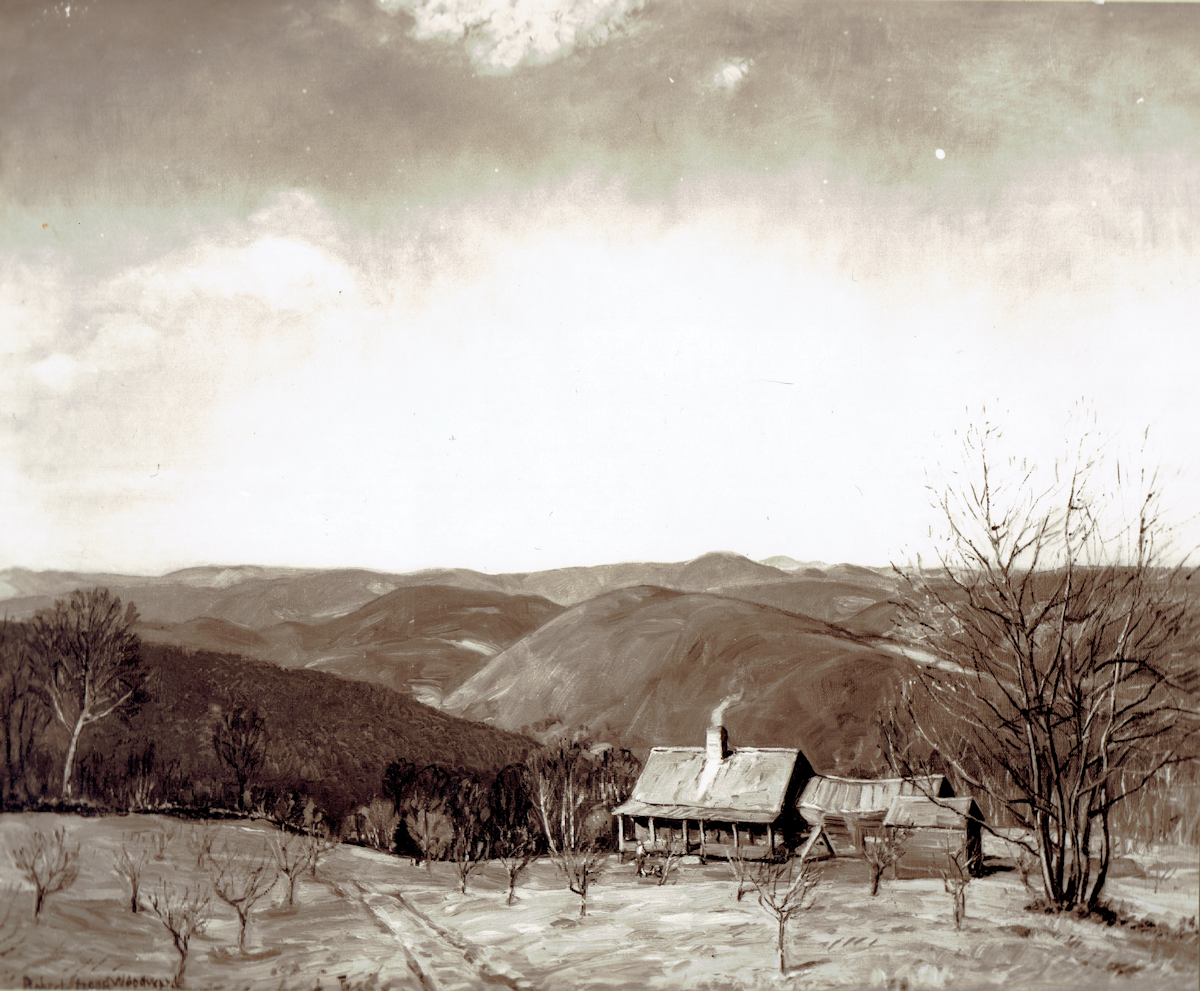
From a Mountain Farm
1937: Los Angeles Art Association
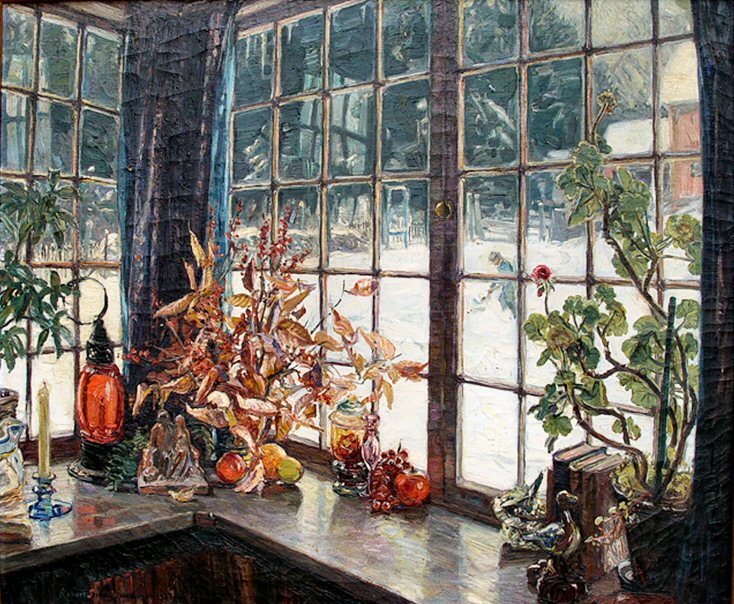
My Winter Shelf
1936: Art Institute of Chicago
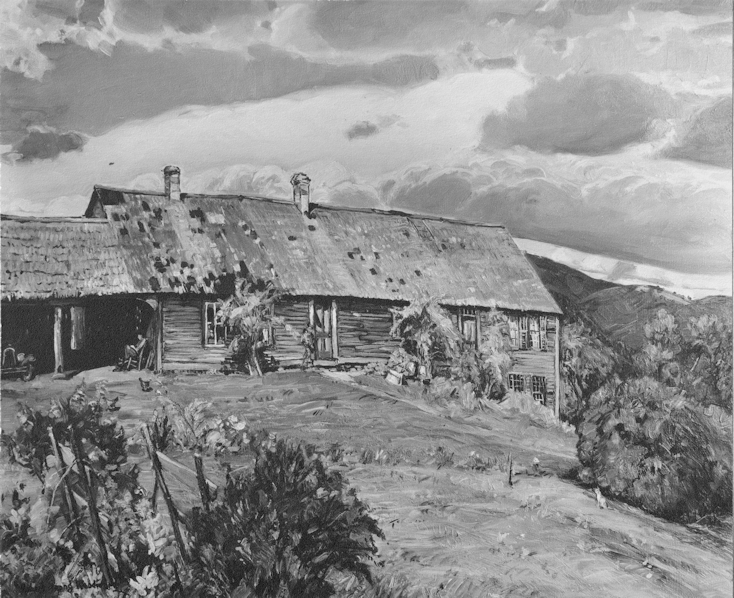
Passing New England
1937: Art Institute of Chicago
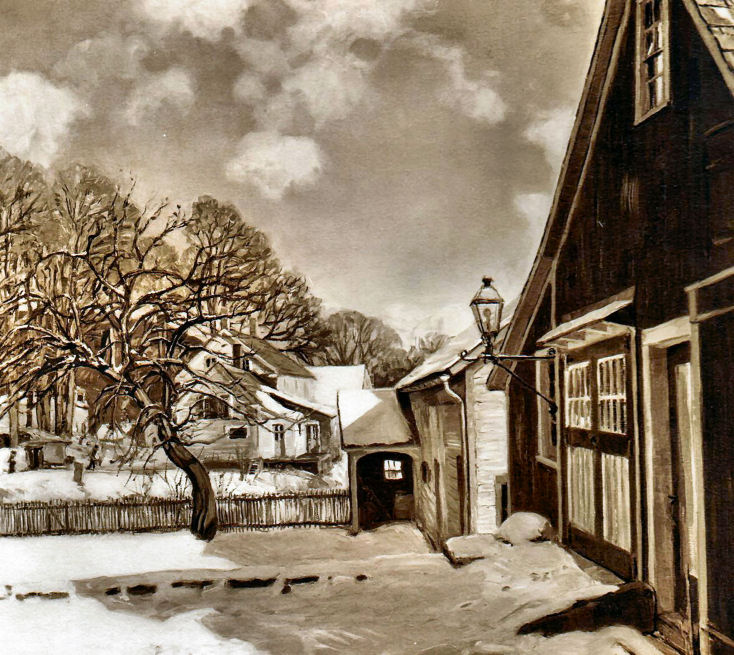
From the Village Yard
1939: Golden Gate Exposition
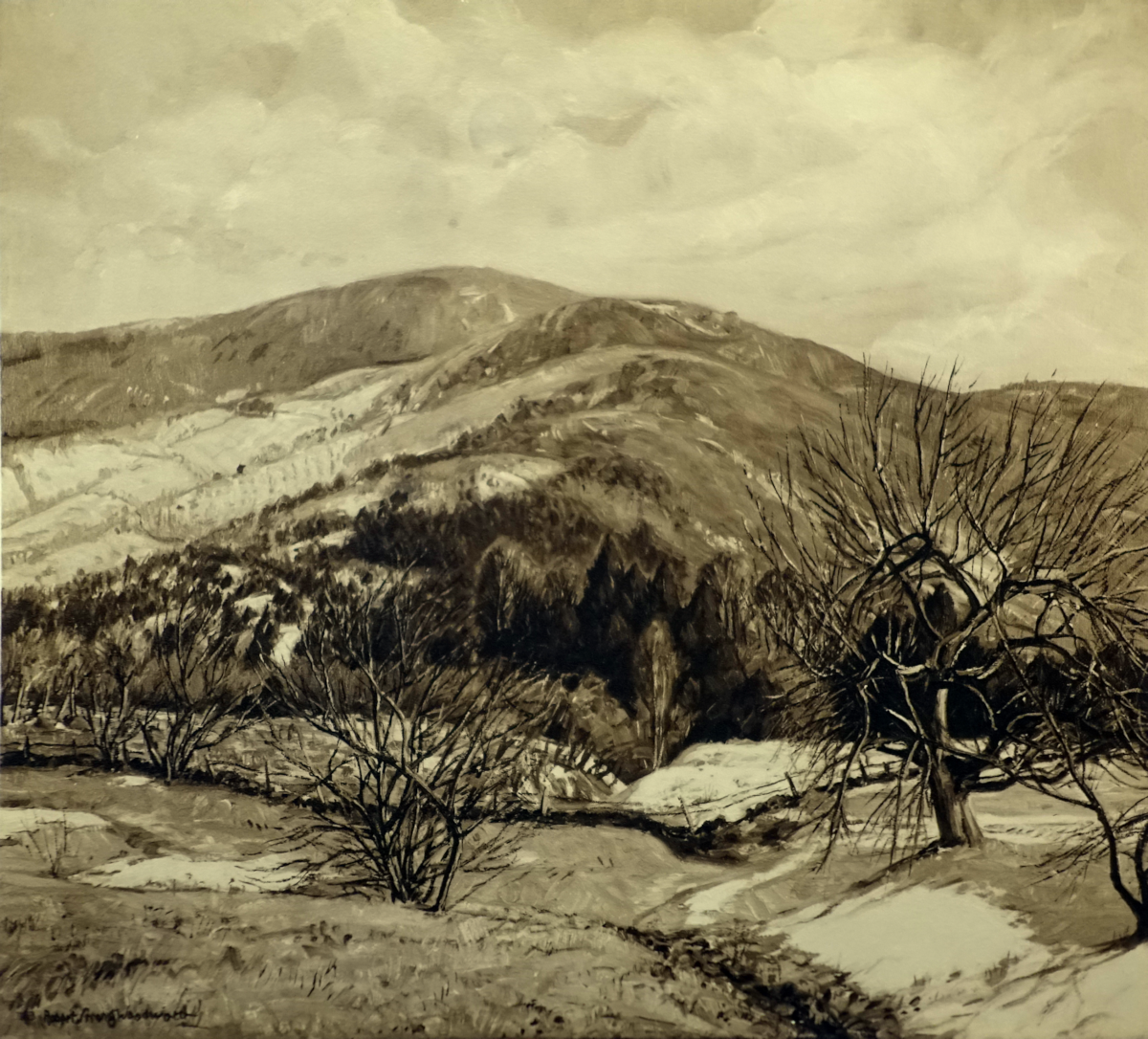
Winter Song
1937: Toledo Museum of Art
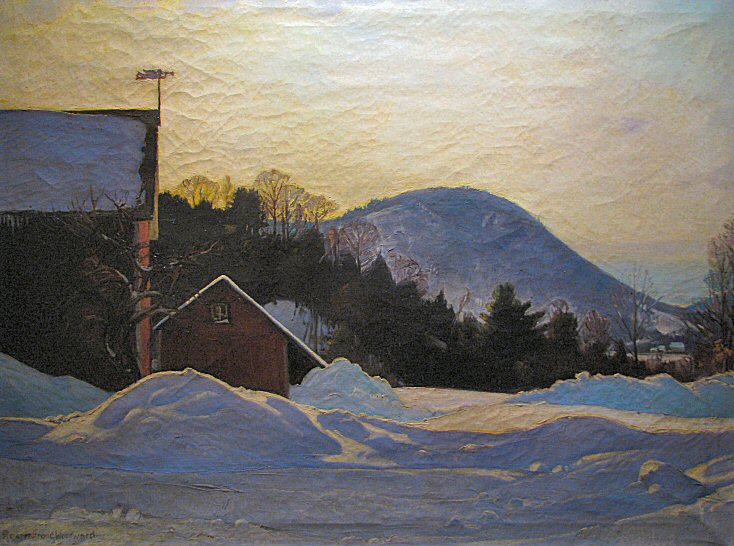
When the Sun Rides Low
1936: Mint Museum of Art
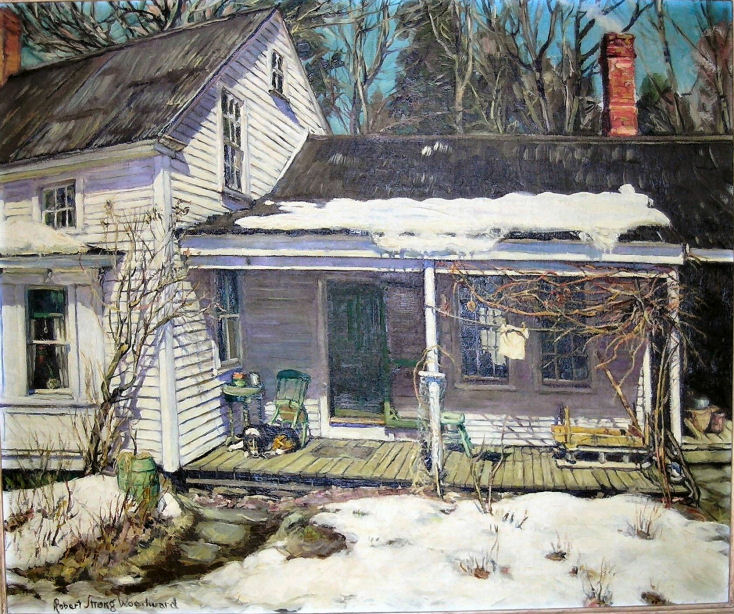
Contentment
1937: Clearwater (FL) Art Museum
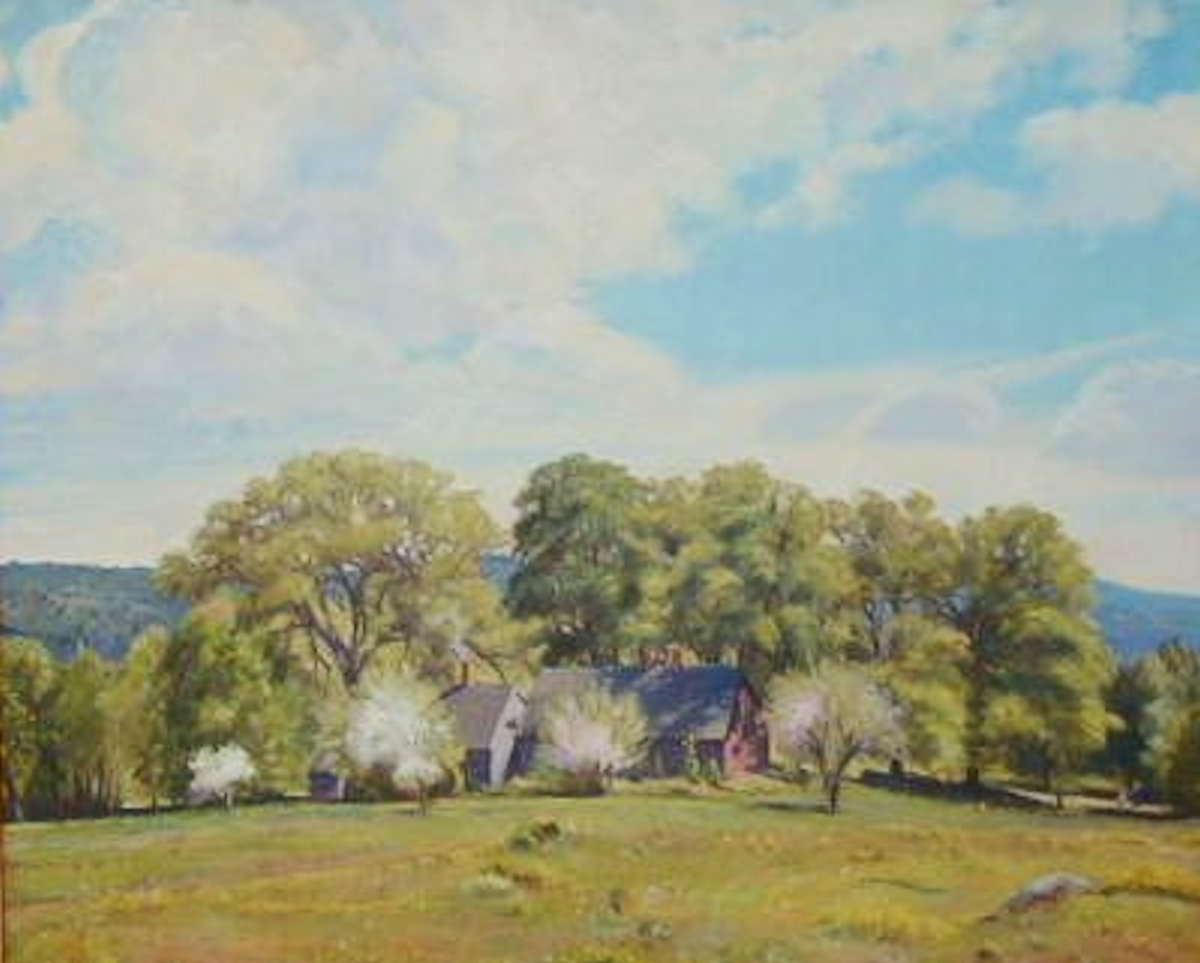
Aged Roofs
continued from the HOME PAGE
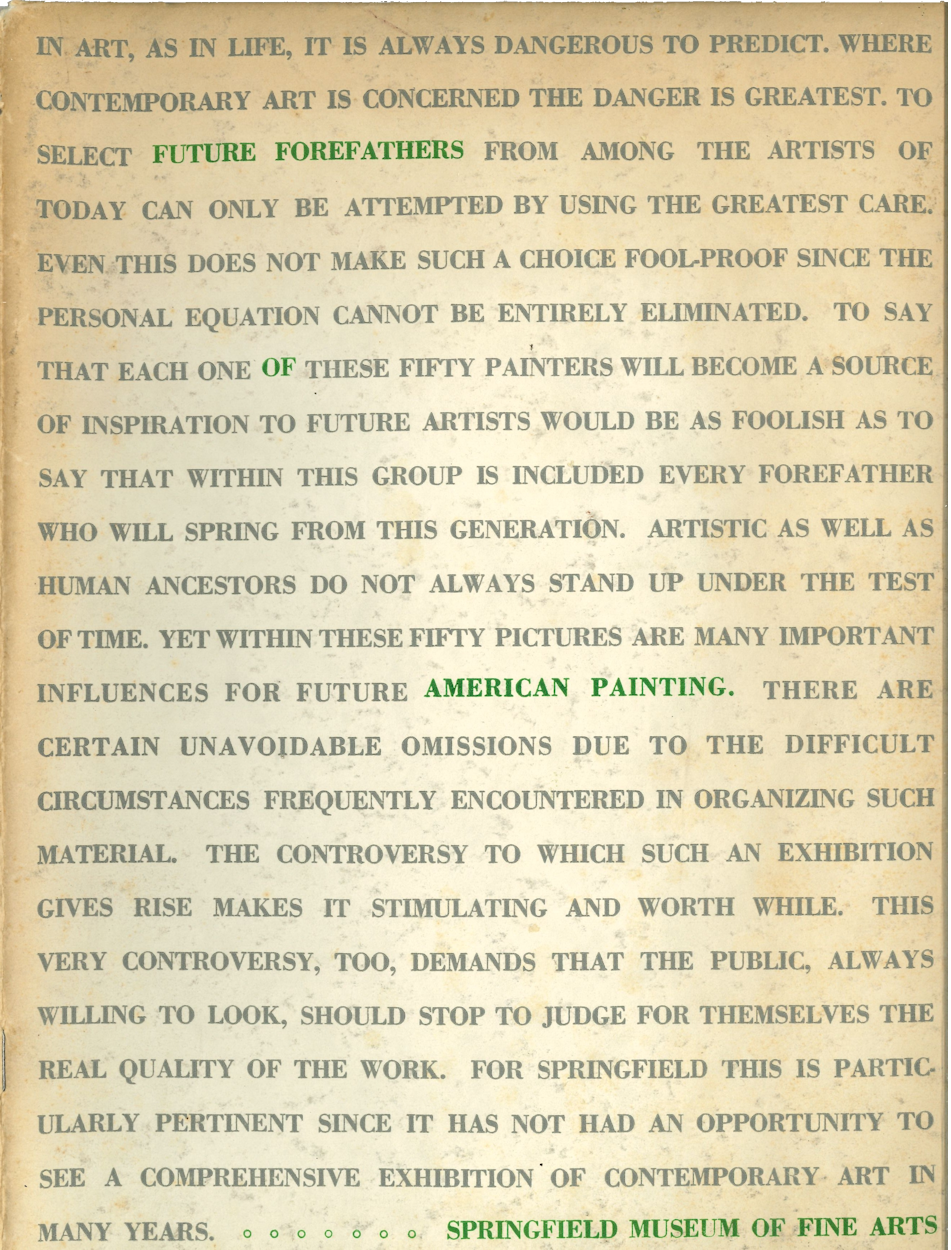
 The 1937 Springfield MFA
The 1937 Springfield MFA
"Future Forefathers" show program
...We are not going to complain about any injustices. Woodward admired and studied Greek Stoicism and Buddhism/Taoism
where one does not complain "even in the most straightened circumstances" one does not lament perceived injustices.
Legacy, as it is also with charisma and "likeability" are the most difficult and complex qualities to predict because
they are so complex with unfathomable variables to one's universal appeal.
For example, in the NBA Michael
Jordan is far more likeable than Lebron James and is still more widely considered the G.O.A.T (Greatest Of All Time)
despite Lebron having far more production across far more categories (rebounds, assist) for twice the longevity (20yrs
vs. 9yrs) and has been to more championships with more teams than Jordan and Jordan never won a championship without
Scottie Pippen whereas Lebron has won with a lot of other teammates. Just on pure numbers it is not even close and yet it
is not just the hard objective facts. There is also the subjective, often "beyond word" or inexplicable, sometimes
nonsensical. It is as much a feeling or sensation, figurative if you will, that touches something just beyond our reach
but we know it when we see it, experience it, like love. Actually, we feel like we can at least make the joke the Woodward
is not 'getting the love.'
Many critics, like the Boston Globe's A.J. Philpott, and others predicted that
museums and collectors would be clamouring for Woodward's paintings some time in the near future which never really
materialize although the public still shows a very strong interest.
Even the "Future Forefathers"
program adds a disclaimer to its themed event and they do so right on its cover in a fairly clever way. The gray text
strewn across the cover is an explanation of the event with the green text highlighting the name of the showing. Here is
the specific disclaimer:
"To say that each one of these fifty painters will become a source of inspiration to future artists would be as foolish as to say that within this group is included every forefather who will spring from this generation. Artistic as well as human ancestors do not always stand up under the test of time." Woodward hung with the best of his day and while he may not be an all-timer, no one can take away or diminish his achievements."
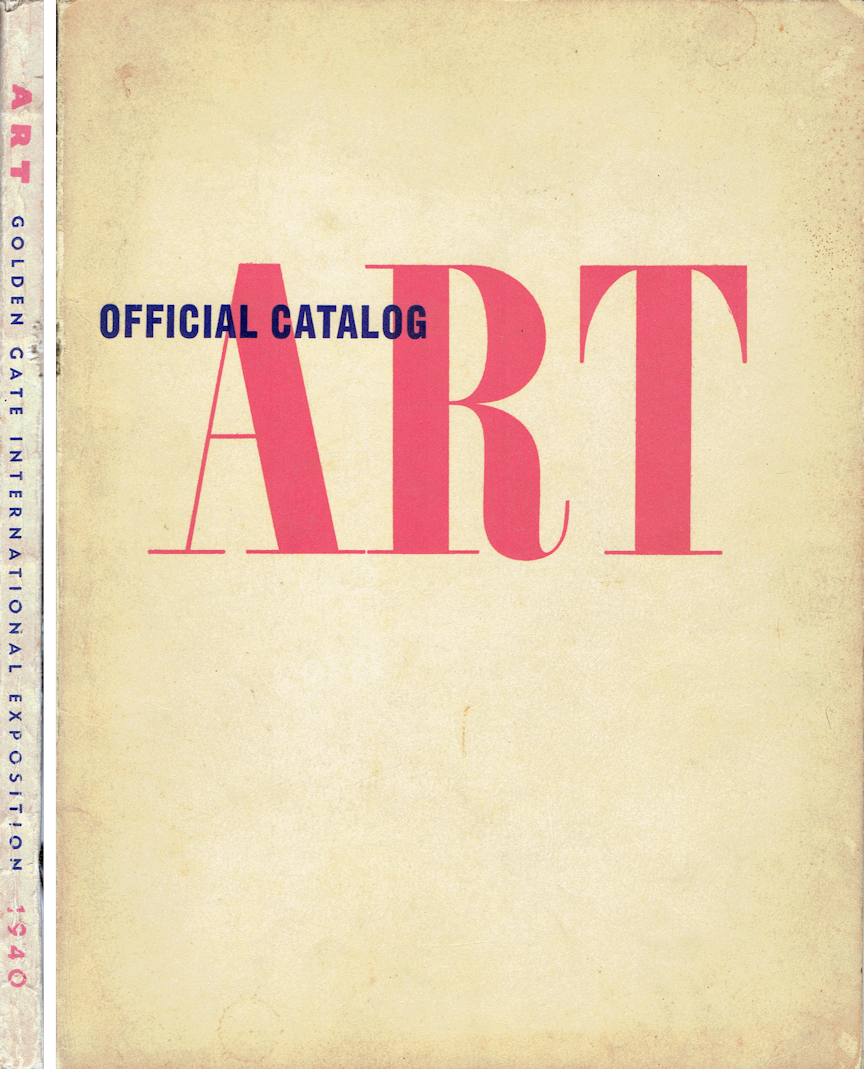
 The 1939 Golden Gate
The 1939 Golden Gate
Exposition show program
We are not trying to make too much of his selection to these prestigious shows but we also do not want to discount them
either. As the disclaimer for Springfield says, "while he may not be an all-timer, no one can take away or diminish his
achievements," and these are bona fide benchmarks, along with his 20 awards, and what collections hold his work. There was a
professor of art history who once expressed an interest in Woodward's entry into the 1939 New York World's Fair and we
told him that New York is not nearly signifiant as the 1933 Chicago World's Fair where Woodward's Country Piazza hung in
contrast to Grant Wood's American Gothic or even the far more impressive yet less recognized 1939 Golden Gate Exposition in
San Francisco.
We hope to start rolling out these programs to make them available but first we have to look at
the legal stuff like copyright and get permission where it is necessary. Once we do, and you get a glance at some of these
shows and the artist who participated, like the Bucks Hills exhibition in the Pennsylvania Pocono Mountains or the annual
"international" art show started by a high school in Springville, Utah or the impressive art shows in Ogunquit, Maine and
you will begin to understand that it is not just all about New York city and Boston. That is especially true when it comes
to Chicago and San Francisco; two rising and influential cultural centers in the growing nation.
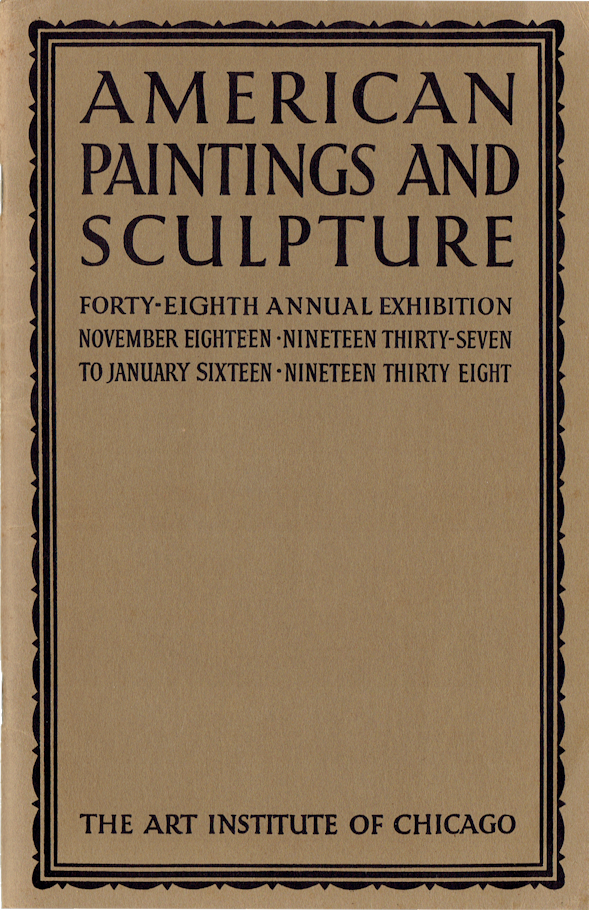
 The 1937 Art Institute
The 1937 Art Institute
of Chicago show program
Another thing that stood out in our processing of these programs was just how far and above the Art Institute of Chicago's
annual show was over everyone else. Paging through their program, the art and sculpture illustrated in its pages are unlike any
other. Its distinction is how genuinely and authentically American the paintings represent. Each painting you see in its pages
are unmistakeably American and it provides a very rich cultural experience of this country through art (particularly the 1937
issue). This is what makes the exclusion of any images in the 1937 Springfield show and the 1939 New York World's Fair exhibit
programs so disappointing... You cannot get any sense of its cultural significance without seeing some images of the paintings.
One of the more amusing antidotes of our experience digitalizing these documents was the discovery that a painting by James
Chapin of Katherine Hepburn, as "Jo" from the 1933 film adaptation of Little Women by Louisa May Alcott appeared in Chicago in
1936 and the Toledo Museum of Art in 1937, and Jean François Millet's "The Man with the Hole" appearing at the 1937 Los Angeles
Art Association show as well as the 1939 Golden Gate Exposition.
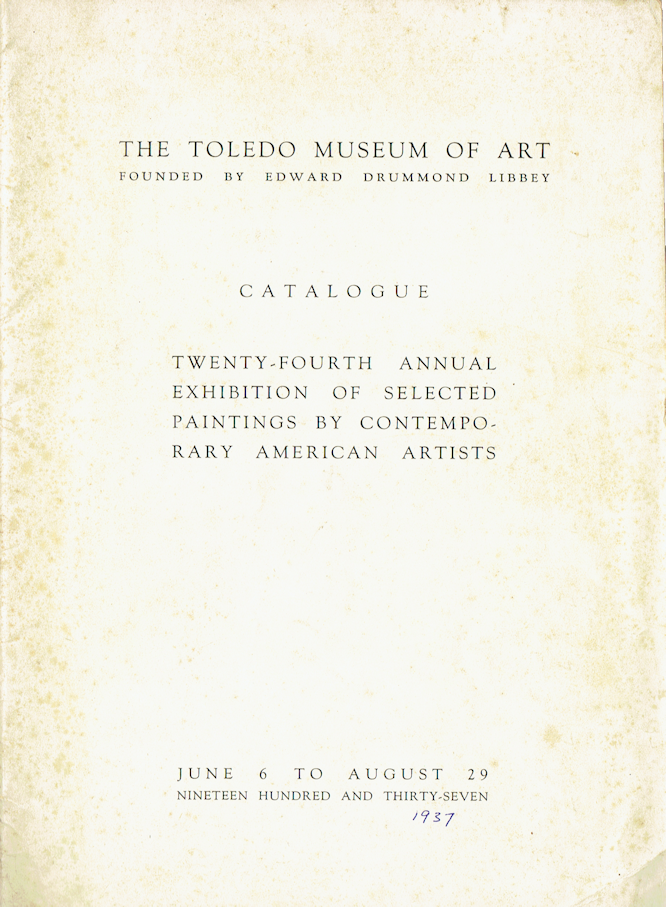
 The 1937 Toledo Museum
The 1937 Toledo Museum
of Art show program
We began this commentary on Woodward's exhibiting history by saying that the peek of his career was 1937 and it is because that is what the exhibitions list tells us. Noting the shows his work hung in the year 1937, while each has their own story, no other year in Woodward's career is more impressive from January to December than 1937. The years 1933 and 1939 are a distant second and third. At any given time during the year 1937, his work was being shown in Springfiled, Boston and Concord, MA, Manchester, VT, Philadelphia and Bucks Hill, PA, Clearwater, FL, Toledo, OH, Chicago, IL, Springville, UT, Los Angeles, CA, New York City, NY, and Albany, NY where he won Second Place prize for June Corn. That is 8 states in 6 regions of the United States (New England, Mid-Atlantic, MidWest, South, Southwest, and West Coast), and if Utah is not enough Southwest for ya'll, three Woodward paintings hung in the Dallas (TX) Museum of Fine Art for eight months in 1936 from April to December leading up to 1937; not to mention also having a painting hanging in Charlotte, NC, at the Mint Museum of Art from October to January 1, 1937.
Even the math works out well enough to support this premise. Woodward's career technically began in 1917 and lasted 35 years to 1952. The year 1937 is twenty years into his career, however, if you factor that his career was derailed in 1922 for almost 4 years, and then the speed bump of his 1934 fire that effected another year of his career and split the difference to 2.5 years, subtracted from 20, makes 1937- 17.5 years or the halfway into his 35 year career! For emphasis, 1922 is 15 years after 1937 and 15 years before his retirement. However, while 1937 maybe the peek of his popularity nationally it is probably not the peek of his skill. Woodward won 5 award prizes in the 1920s, and another 5 in the 1930s. However, he would go on to collect another 10 awards in the 1940s and that includes the 2 years all exhibitions were closed for WWII...
